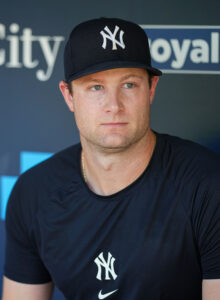Right-hander Cristian Javier has been scratched from his scheduled start against the Nationals this afternoon and will be placed on the injured list, Astros manager Joe Espada told reporters (including Matt Kawahara of the Houston Chronicle). Right-hander Hunter Brown will take the ball against the Nationals today in Javier’s stead, while righty Spencer Arrighetti is being recalled to replace Javier on the club’s active roster.
Javier has been a rare bright spot in what has been a brutal start to the 2024 campaign for the 7-15 Astros. None of that can be pinned on the 27-year-old righty, however, as Javier has dominated to the tune of a 1.54 ERA and a 3.66 FIP in 23 1/3 innings of work across four starts so far this season. Unfortunately, he’ll now take a seat for at least 15 days, though Espada indicated (as relayed by Kawahara) that the goal of Javier’s placement on the injured list was simply to “give him time” to recover, suggesting a fairly short absence could be on the table.
Even if Javier’s trip to the injured list is a fairly short one, it’s still tough news for the Astros. The club just returned veteran ace Justin Verlander from the injured list last week, and now Javier will join Framber Valdez, Jose Urquidy, Luis Garcia, and Lance McCullers Jr. on the shelf for the time being. Of that group, only Valdez appears to be nearing a return. The lefty was placed on the injured list earlier this month due to elbow soreness but avoided a more serious injury, with Kawahara relaying that Espada even left the door open to Valdez returning to the club’s rotation sometime this week to pitch alongside Verlander and J.P. France against the Cubs at Wrigley Field.
If Valdez can return in the coming days, it should be a fairly seamless transition into the rotation with off-days on Monday and Friday allowing the club additional flexibility if necessary. The southpaw made just two starts prior to going on the injured list at the beginning of the month but looked good in both of them, pitching to a 2.19 ERA with a 3.55 FIP and 10 strikeouts in 12 1/3 innings of work.
Should Valdez need a bit longer before he’s ready to be activated, the Astros figure to turn to Arrighetti to make a start at some point. The 24-year-old rookie made his MLB debut earlier this season and struggled badly in two starts, allowing nine runs on 11 hits and five walks in just seven innings of work, though he did manage to notch eight strikeouts. If Arrighetti doesn’t end up being needed to make a start in the coming days, the Astros could instead look to use him to bolster a bullpen that has posted a worrisome 5.29 ERA to this point in the 2024 season, better than only the Rays among AL clubs.

